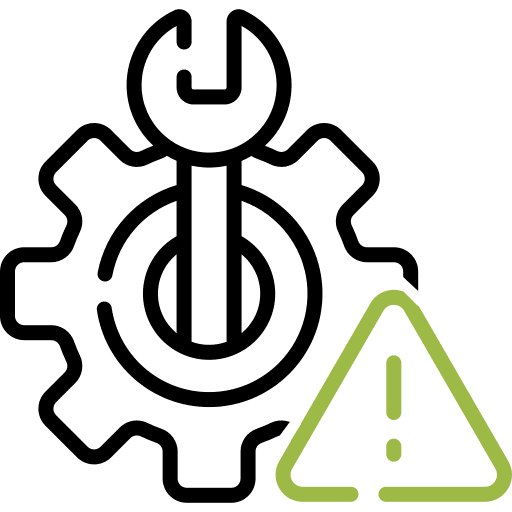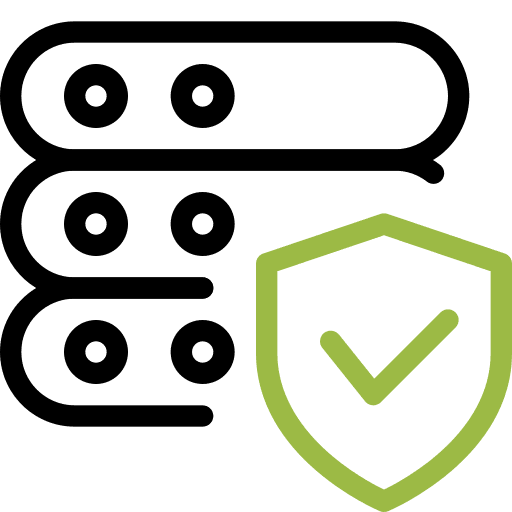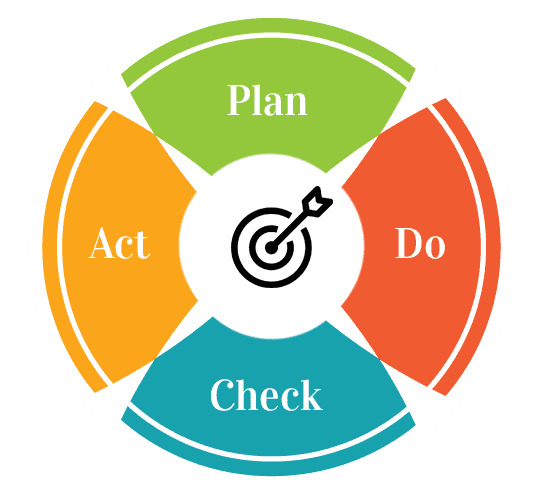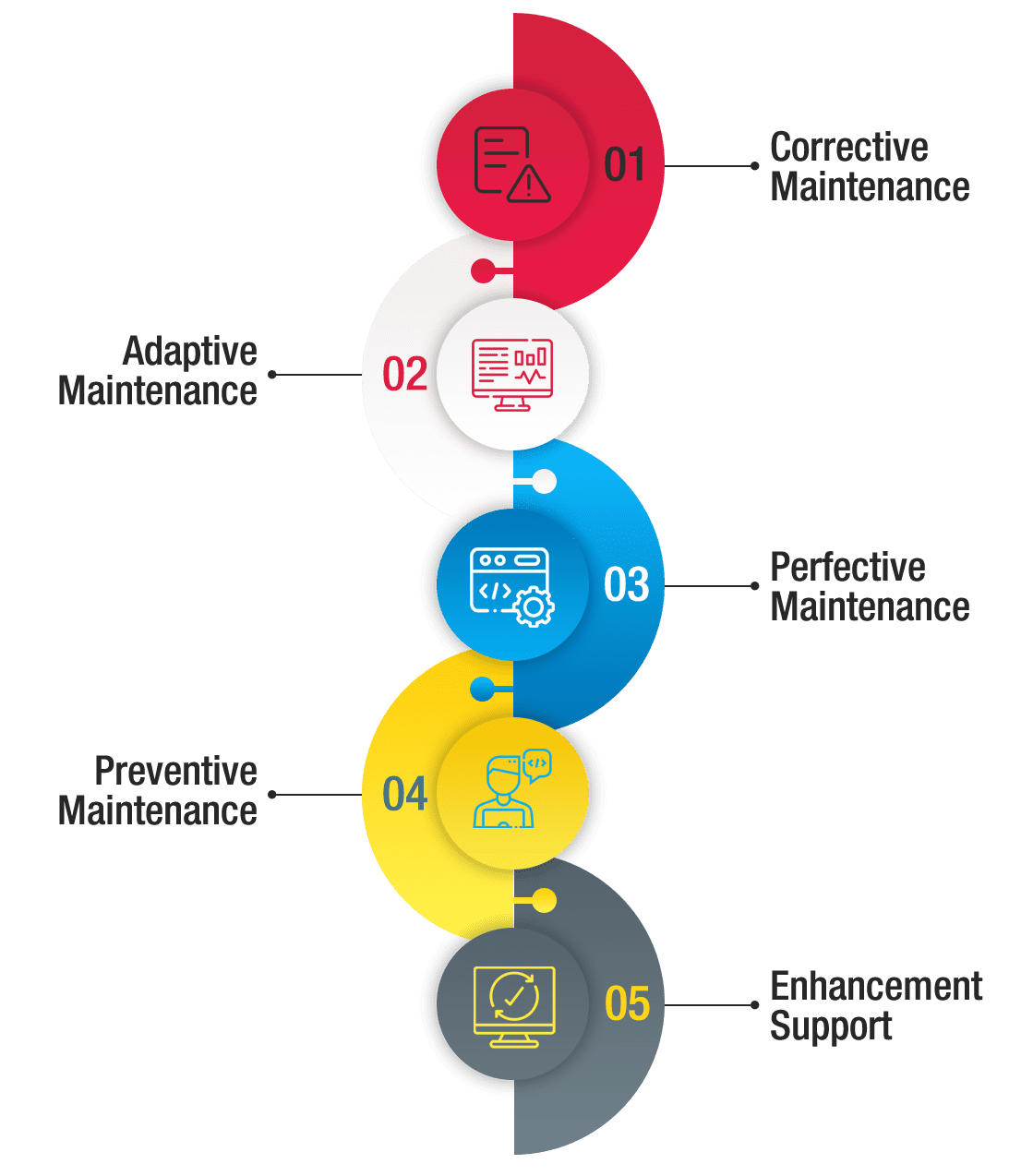Corrective Maintenance
Address errors and faults in software to maintain its integrity and protect your brand's reputation. Spot and resolve issues before customers encounter them, ensuring smooth operation and customer satisfaction.

Providing ongoing assistance, troubleshooting, and enhancements to address issues, improve performance, and adapt to evolving business needs.
Our dedicated support and maintenance teams are well equipped to provide continuous assistance to address any issues that arise in software applications. We offer proactive troubleshooting to swiftly identify and resolve challenges, ensuring minimal downtime and uninterrupted operations.Our holistic approach ensures your applications remain reliable, efficient, and capable of supporting your business’s growth and competitiveness.

Application support teams are responsible for promptly addressing any issues or bugs that may arise in the software. They work closely with users to identify and understand the problems, providing timely resolutions to minimize downtime and ensure uninterrupted operation of the application. This proactive approach helps in maintaining a high level of user satisfaction and productivity.

Over time, software applications may experience performance degradation due to increased data volumes, growing user base, or changes in the underlying infrastructure. Application support and maintenance teams focus on optimizing performance by identifying bottlenecks, fine-tuning configurations, and implementing necessary optimizations. This ensures that the application continues to deliver optimal performance, meeting the demands of users and the business.

As businesses evolve, their software requirements and workflows may change. Application support and maintenance teams collaborate closely with stakeholders to understand these changing needs and make the necessary modifications to the application. They ensure that the software remains aligned with the evolving business objectives, integrating new features, functionalities, and integrations as required. This flexibility enables organizations to leverage their software applications as strategic assets that support their growth and competitiveness.

Application support and maintenance encompass a continuous improvement mindset. The teams actively seek feedback from users, monitor application usage patterns, and identify opportunities for enhancements. They work on implementing new features, usability improvements, and security updates to keep the application up-to-date and aligned with industry best practices. These enhancements not only address user needs but also contribute to the long-term stability, reliability, and scalability of the application.

Application support and maintenance teams ensure proper version control and documentation of changes made to the software. This helps in tracking modifications, understanding the application's history, and ensuring transparency and accountability. It also facilitates seamless collaboration among team members, allowing them to work efficiently and effectively.

Application support and maintenance teams prioritize security measures to safeguard software applications from potential threats and vulnerabilities. They implement proactive security practices, perform regular security assessments, and apply necessary patches and updates to mitigate risks. By maintaining a robust security posture, they ensure the confidentiality, integrity, and availability of the application, fostering trust and peace of mind for both users and the organization.



Objectives, goals, and service level agreements are defined, along with resource allocation and risk assessment. This ensures smooth operation, timely issue resolution, and effective support.

Planned activities are executed, including incident and problem management, user request handling, routine system checks, patches and updates, and preventive maintenance tasks, to ensure application functionality and stability.

Support and maintenance activities are evaluated by monitoring key metrics such as response times, issue resolution rates, and customer satisfaction. Performance reviews and audits are conducted to identify improvement areas and assess process effectiveness, ensuring alignment with expected outcomes.

Adjustments and improvements are made based on check phase findings, including root cause analysis of recurring issues, process optimization, and updates to maintenance plans. Lessons learned from previous cycles are utilized to refine and enhance support and maintenance practices.
Software maintenance is a fundamental aspect of the software development lifecycle for all businesses and organizations, playing a vital role in ensuring long-term success and future growth. It extends beyond issue resolution, encompassing tasks such as updating software environments, mitigating deterioration, and enhancing existing features to meet the evolving needs of users.

